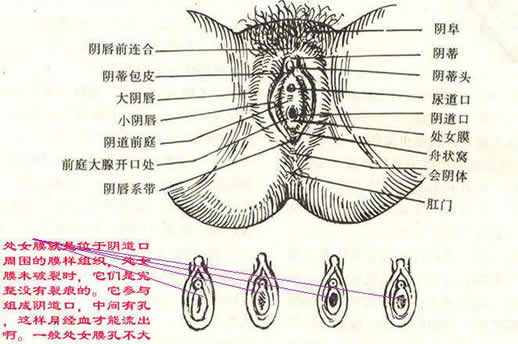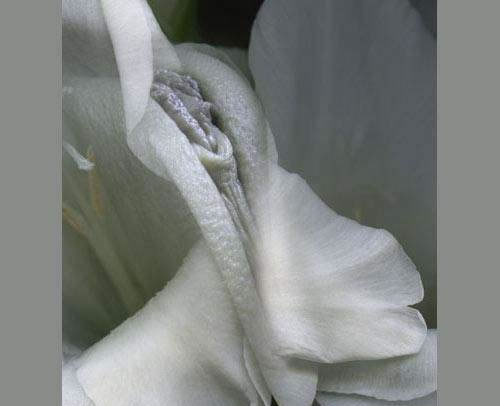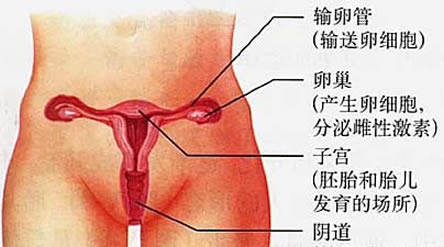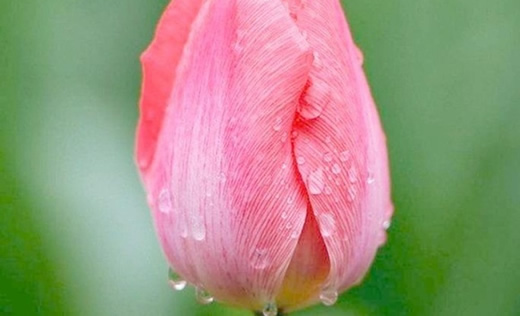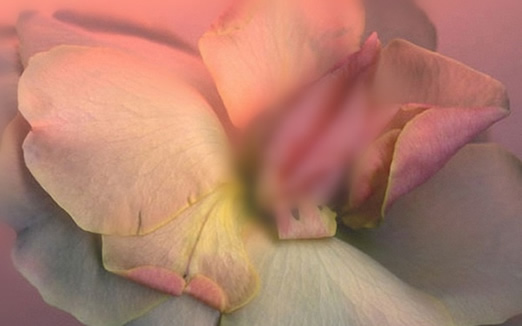How much do you know about the hidden parts of women? For the most private parts of a woman's body, not only women, but also men should popularize the body secrets of their lovers, as the so-called she is good for you.
What kind of pictures are the hidden parts of women
Women's external reproductive organs include mons pubis, labia majora, vulva minor, labia, clitoris, vaginal opening, urethral opening, vestibule, and hymen. These uneven, convex and concave parts form the female private parts. According to the conclusion of a survey on women's private parts: 77% of women will carefully observe their private parts through the mirror, and 53% of women are willing to discuss the use of this area with him. But here's the discouraging fact: 45% of women don't know any health secrets about this area.
1: Analysis of the structure of the hidden parts of women
1. The mons pubis is located under the lower abdomen and is composed of skin and thickened fatty tissue. After its surface is raised and enters puberty, pubic hair grows on the top of the mons pubis. Generally, the tip is downward, and it is mostly distributed in an inverted triangle. The mons pubis has a buffering and protective function. Also, the number, thickness, color and shape of a woman's pubic hair are different, mostly due to genetic characteristics that make the individual differences.
2. The labia majora are located on the inner side of the two thighs, extending from the mons pubis to the perineum, a symmetrical and raised mucosal tissue. The skin outside the labia majora has pubic hair, subcutaneous fatty tissue, elastic fibers and vascular plexus. As women mature, the inner mucous membranes of the labia majora are pigmented and dark brown. In the state of sexual excitement, the labia majora on both sides are slightly opened outward, and the vaginal opening is naturally exposed. Under normal circumstances, the labia majora are closed in the midline, covering and protecting the vaginal opening and urethral opening. The labia majora of multiparous women are separated to both sides due to the influence of childbirth.
The thickness of the labia majora reflects the quality of female development and nutritional status.
3. The labia minora are located on the inner side of the labia majora. They are a pair of mucosal folds, dark in color and moist on the surface. They extend upward to the clitoral foreskin and meet at the scaphoid fossa of the vaginal opening. Like the labia majora, the shape, size, thickness, and color of the female labia minora are different to some extent, which are related to genetics, race, and nutritional factors.
4. The clitoris is located at the top of the labia minora on both sides. It is a small oblong organ with a rounded protrusion at the end. Like the male penis, the clitoris has an erectile function. It contains cavernous tissue, which is rich in nerve endings and feels very sensitive. The size of the clitoris varies from person to person, some people are bigger, some people are smaller. In addition to genetic factors, local stimuli can cause enlargement.
5. The hymen is a thin film covering the outer opening of the female vagina. It is only 1-2 mm thick, and the small hole in the middle is called the hymen hole. The size of the hymen is large; the thickness and shape vary from person to person, usually round, oval or zigzag, some are half-moon-shaped, some are screen-shaped and so on. The hymen has a certain protective effect, which can prevent external impurities from entering the vagina, and at the same time play a shielding effect on the entry of bacteria. However, after entering puberty, due to the increase in hormones secreted by the ovaries, the resistance of the vagina is continuously strengthened, and the hymen will lose its protective effect.
6. Some glands are hidden in the female external genitalia, which are accompanied by secretion. The secretion increases during sexual excitement and plays the role of moistening the vulva and vagina. One is the vestibular glands, which are located on both sides of the vaginal opening and are a pair of cavernous tissues with secretory function. The second is the Bartholin's gland, also known as the Bartholin's gland, which is located at the back of the labia majora, between the labia majora and the labia majora. It is a pair of glands the size of a broad bean.
7, urethra and vaginal opening. On the surface of the female external genitalia, there are two obvious nearly circular openings, the urethral opening at the upper end of the vulva and the vaginal opening at the proximal end. The urethral opening is a relatively regular oval hole. There are a pair of glands in the back wall of the urethra called the paraurethral glands, which are the easiest places for bacteria to hide. And at the lower end of the urethra near the anus is the very irregular vaginal opening. It is at this more obvious opening that there is secretion and moisturizing, and menstrual blood flows out, which is also the place where new life is born.
Two: The physiological secret of a woman's real vagina
1. The average length of the labia minora is 6cm. The average length of a girl's labia minora is generally five to seven centimeters, which is a standard length, but a girl who has given birth will elongate slightly.
2. The vagina angle is 15 degrees. When a girl is lying down, the horizontal plane of the vagina and the bed is generally at a downward angle, usually about 15 degrees;
3. Menstrual blood volume 100cc. The flow of menstrual blood varies greatly with each menstrual period, but on average it is about 100cc.
4. The vaginal wall secretes love fluid within 30 seconds. When sexually stimulated, the time it takes for the vaginal wall to begin to secrete love fluid, an average of 30 seconds. In other words, just one deep kiss with her is enough to get her into a state where she can have sex. Have a comprehensive understanding of the sexual physiology of men and women, break the mystery of sex, and treat sexual disturbances with a healthy psychology and correct attitude, thereby improving self-control.
5. The vaginal temperature is 38.5 degrees. The temperature in the vagina is about 37.3 to 37.8 degrees Celsius on average; however, the temperature in the vagina can rise sharply to 38.5 degrees Celsius when excited and congested; The temperature inside can rise sharply to 38.5 degrees Celsius; the circulation of blood is active, making the temperature of the vagina also high.
6, climax 6 seconds. When a girl gets an orgasm, the feeling of extreme feeling is about one to two seconds longer than the pleasure obtained by a man during ejaculation.
7. A woman ovulates 400 to 500 eggs in her lifetime. From menarche to amenorrhea (that is, throughout life), the total number of ovaries in a girl is 400 to 500.
8. Female vaginismus for 0.8 seconds. When an orgasm is achieved, the girl's vagina, uterus and anal sphincter will twitch for about 0.8 seconds, about a total of seven to eight times, and repeat the contraction to produce pleasure.
9. The pubic hair is 86 square centimeters. The lowest record recorded was 21 square centimeters. Here, about fifteen pubic hairs grow in an area of 1 square centimeter, and the average length is six to seven centimeters.
10. The size of the nuclei is 7mm. For more than half of the girls, the size of the penis is about six to eight millimeters, and seven millimeters is the average size. But when there is sexual excitement, like the male penis, it will also erect.
11. The virgin's first experience of sex is 60% red. When virgins experience sex for the first time, 60% of them will bleed, but the redness will make the bed sheets also stained. .
12. The average length of female vagina is 7cm. The average length (depth) from the vaginal opening to the uterus is six to ten centimeters, and can be two to three centimeters wide. Unmarried girls (meaning no sexual experience), the vagina is generally seven centimeters long.
13. The love liquid secreted during sex is 20cc. The average amount of love liquid secreted by girls during each sex is 20CC, which is more than everyone thinks.
Three: Sorting out various physiological knowledge about women's private parts
1. Having a baby will make it 5 times bigger. Usually, the vagina is no more than an inch in diameter. But before the baby is born, the vagina expands miraculously to 4 to 5 inches wide to allow the baby's head to pass through. But about six weeks after giving birth, the vagina will return (or almost) to its previous, non-pregnant size.
2. Vaginal edema during pregnancy. During pregnancy, under the influence of estrogen and progesterone secreted by the placenta, the vaginal mucosa has congestion and edema. At this time, the permeability of the vaginal mucosa is increased, the exudate is significantly larger than that in the non-pregnant period, and the glandular secretion of the cervical canal is increased, so the vaginal secretion in pregnancy is significantly larger than that in the non-pregnant period, often white paste, no smell . A series of physiological changes during pregnancy make it easy to suffer from fungal vaginitis at this time, and the infection rate is 9.4% - 18.5%.
3. After giving birth, the vagina does not change much. Changes in the appearance and tissue of the vagina after childbirth are actually far less obvious than women understand. From the outside, very few people can tell from the outside whether a woman has given birth unless there is a tear during labor. Some women also feel that the vagina is sagging and flabby after giving birth. Lisa Lan suggests that such women can contract the pelvic floor muscles more, lasting a few seconds at a time, and repeating more than 10 times.
4. It makes a sound when making love. The vagina also makes sounds during sex, mainly caused by the way the partner enters. If he pumped thoroughly every time, then air would inevitably leak in between the pumping gaps, and when the air was squeezed out from a relatively closed environment, it would naturally make a sound.
5. The natural defense barrier of the vagina. The labia minora on both sides of the vulva are often closed and closed, and the front and rear walls of the vagina are close together, forming a natural defense barrier.
6, the vagina will also peel. Under the influence of estrogen, vaginal epithelial cells can undergo periodic changes and fall off, which is a natural metabolism. The pH of the vagina is between pH 3.8 - 4.5. Due to the action of normal bacteria, the pH value of this space is maintained between pH 3.8 - 4.5, so that most pathogenic bacteria adapted to survive in an alkaline environment cannot grow and reproduce here.
7. Hate leucorrhea is also the holy hand of pure Yin. Due to the existence of leucorrhea, foreign pathogens cannot survive in the vagina, so as to keep the vagina safe, which is called vaginal self-cleaning in medicine. This self-cleaning effect actually benefits from a large number of beneficial bacteria in the vagina - vaginal bacteria. This bacteria can convert the glycogen contained in the keratinized epithelial cells in the vaginal wall into lactic acid, thereby inhibiting harmful bacteria that invade the vagina. And vaginal bacteria cannot grow in a dry environment, and must thrive in a moist state, and leucorrhea just moistens the vagina, which also contributes to the growth of vaginal bacteria and maintains the self-cleaning effect of the vagina. It can be seen that normal leucorrhea is not superfluous, and the view that leucorrhea is very dirty and needs to be cleaned is wrong.
8. The vagina has the function of self-cleaning. Various glands in the vagina secrete some fluid to lubricate and clean the vagina. Introduced by Los Angeles Registered Senior Nurse Lisa Stein. It should be noted that excessive cleaning of the vagina during bathing will wash away those natural lubricants and probiotics, causing anaerobic bacteria and mold to multiply, resulting in abnormal secretion, odor and itching. Therefore, you can wash the vulva, do not use vaginal douches.
9. The vagina secretes 1.55 grams of fluid in 8 hours. In women of childbearing age, vaginal discharge weighs about 1.55 grams every 8 hours. If the labia is more prominent, the secretion of mucus is more. Beverly Whipple says the discharge can vary in color. In most cases, vaginal discharge is white, and turns slightly yellow when it dries. If the discharge turns green when wet, or if you feel burning or itching in the private parts, or if the discharge smells fishy, you need to go to the hospital for a checkup as soon as possible.
10. Under sexual stimulation, the vagina will become longer. Under normal conditions, the average length of the vagina is 8.5 cm to 12 cm. After being sexually stimulated, the vagina deforms and doubles in size. Adequate foreplay can further expand the vaginal volume, and it will also enhance the sexual experience.
11. Properly busy is healthier. Regular sex not only makes a woman younger, it also makes her vagina healthier. Because sex will exercise the vaginal muscles, thereby keeping them tight. In addition, the more mucus secreted due to excitement before sex, the less likely it is to cause vaginal damage during sex.
12. The vagina also has wrinkles. The appearance of a woman's private parts changes with age. Decreased estrogen levels make the labia less plump, the fat pad shrinks, and the loss of collagen causes the labia to sag and wrinkle. These are normal physiological changes and do not significantly affect sexual feelings.
13. During orgasm, the vagina will also ejaculate. This is a skill that needs to be learned to master. Vaginal ejaculation during orgasm is common when women understand the mechanics of the body. There are many glands next to the urethra, especially when the front wall of the vagina is irritated, they secrete fluid. This area of glands, blood vessels, nerves and spongy tissue can be described as a woman's prostate, according to Professor Beverly Whipple from the Sexual Health Research Unit at the School of Nursing at Rutter University.


